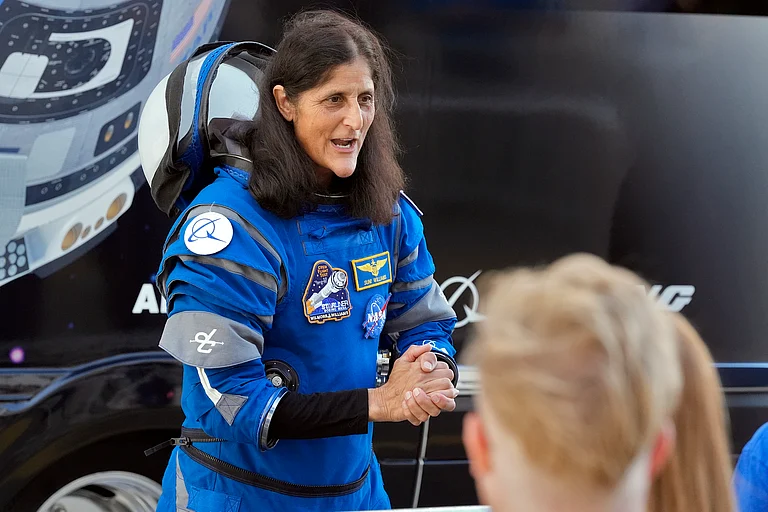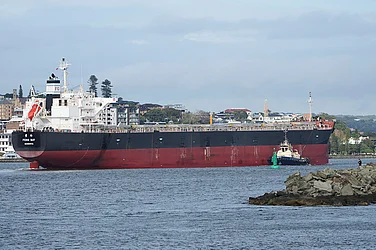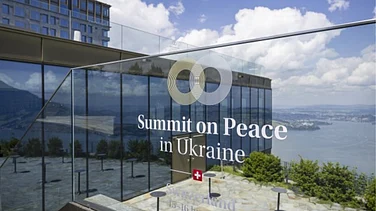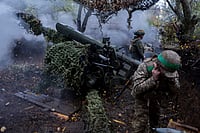NASA on Saturday announced that its astronauts -- Sunita Williams and Butch Wilmore -- will return to Earth in February 2025 on SpaceX Crew Dragon flight, saying that bringing them back on Boeing's Starliner would be too risky.
The US space agency, in a press conference, announced that it will return the Starliner to Earth without Suni and Butch aboard the spacecraft.
Sunita and Wilmore had flown to the International Space Station (ISS) aboard Boeing's maiden test flight in June, with a mission which was supposed to last for a week.
However, due to issues in the thruster and subsequent discovering of helium leaks in the aircraft, the two astronauts had to remain in the ISS for more than the designated time period.
NASA Administrator Bill Nelson shared the big update and said, "Spaceflight is risky, even at its safest and most routine. A test flight, by nature, is neither safe, nor routine. The decision to keep Butch and Suni aboard the International Space Station and bring Boeing's Starliner home uncrewed is the result of our commitment to safety: our core value and our North Star."
"I'm grateful to both the NASA and Boeing teams for all their incredible and detailed work," Nelson added.
Just as discussions about bringing the two astronauts on a SpaceX aircraft had been taking place over the last month, NASA said that a Dragon Crew flight will be their ride back home.
Sunita and Butch will continue their work formally as part of the Expedition 71/71 crew through February 2025, the space agency said. The two will fly back home on board a Dragon aircraft of SpaceX's Crew-9 mission with two other crew members.
Meanwhile, the uncrewed Starliner is likely to depart from the space station and make a safe, controlled autonomous re-entry and landing on Earth in early September.
Issues with the spacecraft reaction control thrusters and helium leaks were identified on Starliner by NASA and Boeing as it approached the space station in June. Since then, teams of both the organisations have been running various tests, conducting flight and ground testing, hosting independent reviews and developing various contingency plans.
NASA noted that the uncertainty now attached do the occurrence does not meet the agency's safety and performance requirements for a human spaceflight, which is why this decision has been taken.
"Decisions like this are never easy, but I want to commend NASA and Boeing teams for their thorough analysis, transparent discussions and focus on safety during the Crew Flight Test," said Ken Bowersox, associate administrator for NASA's Space Operations Mission Directorate.
Bowersox further said, "We've learned a lot about the spacecraft during its journey to the station and its docked operations. We also will continue to gather more data about Starliner during the uncrewed return and improve the system for future flights to the space station."
Notably, Starliner -- which is designed to operate autonomously -- has previously completed two uncrewed flights. NASA and Boeing teams will work together to set up the planning and Starliner's systems for the uncrewed return to Earth in the coming weeks.
Manager of NASA's Commerical Crew Program, Steve Stich said, "Starliner is a very capable spacecraft and, ultimately, this comes down to needing higher level of certainty to perform a crewed return."
"The NASA and Boeing teams have completed a tremendous amount of testing and analysis, and this flight test is providing critical information on Starliner's performance in space. Our efforts will help prepare for the uncrewed return and will greatly benefit future corrective actions for the spacecraft," Stich added.
Notably, a spacecraft should fly a crewed test flight to prove that the system is ready for regular flights to and from the space station as per the requirements of NASA's Commercial Crew Program.
After Starliner returns to Earth, the space agency will review all the mission-related data to inform what additional actions are required to meet NASA's certification requirements.
Notably, the agency's SpaceX Crew-9 mission, which was originally supposed to be with four assigned crew members, will now launch no earlier than September 24. Further details on the Crew-9 mission will be shared once everything is finalised, NASA said.




























